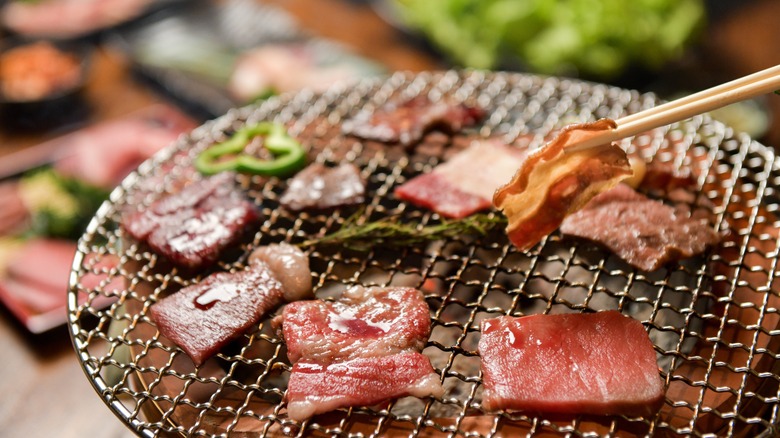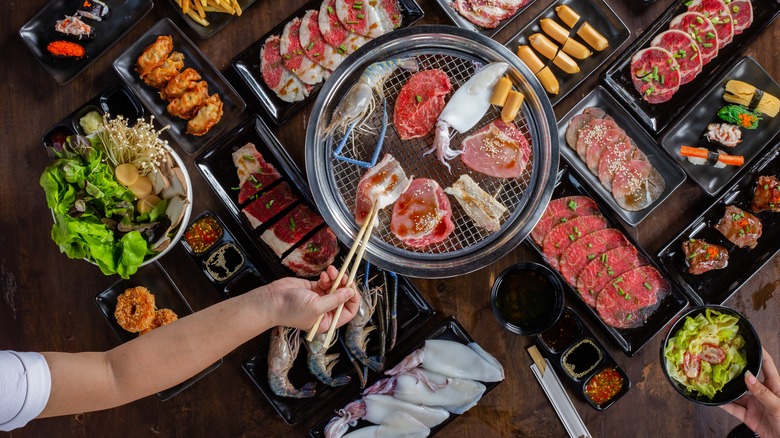The Etiquette Tip To Keep In Mind When Enjoying Japanese BBQ
Japanese culture is well-known for its beauty, efficiency, and etiquette. Yakiniku, or Japanese BBQ, is a culinary tradition that reflects these three descriptors perfectly. An adaptation of Korean barbecue, Yakiniku is a grill-it-yourself communal barbecue experience in which parties of two or more gather around a table with a built-in grill to dine on bite-sized pieces of different cuts of meat.
Every aspect of Yakiniku is catered for convenience. Most Japanese BBQ restaurants are high-end, with staff to light the grill and each piece of meat is cut to cook quickly and make the perfect bite-sized morsel. While you must cook your own meat, the novelty of cooking and eating together is what makes Yakiniku special. The proper etiquette for a harmonious Japanese BBQ experience is to allow every member of your group to cook a morsel simultaneously.
Therefore, you'll wait for everyone to place a cut of meat on the grill before adding any extra pieces. It would be rude to crowd the grill with only your meat as it would defeat the purpose of communal eating, transforming it into an individualistic experience. Of course, each person can prepare their meat to their own standards by deciding how long to cook their meat, as well as which dipping sauces and garnishes will be doled out to each piece.
Typical Yakiniku ingredients, dipping sauces, and garnishes
Just as Japanese sushi and sashimi uses top quality seafood and the freshest ingredients, so too does Yakiniku. Whereas Korean BBQ encompasses a white variety of marinated meats, Yakiniku is traditionally limited to cuts of beef and pork elaborated only with salt and pepper. Both marbled cuts and exotic organs are on the menu at Yakiniku restaurants, however modern menus are expanding to include vegetables and seafood. While everyone can cook the meat to their liking, it's advisable to cook lean cuts rare and fatty meats longer to optimize their textures and flavors.
Menus at Japanese BBQ restaurants feature various formats, and etiquette also dictates that parties choose the same format for the whole party. For example, all party members should choose a multi-course meal or an a la carte, order-as-you-go meal to ensure that each person's food arrives at the same time so you can cook and eat together. Combination meals tend to feature two or three types of meat, bowls of rice, pickled and grilling vegetables, and dipping sauces. Soy and miso-based sauces as well as creamy sesame sauces are the most popular, but chili oils, and aromatic scallion sauces are also available. Some restaurants offer cabbage or lettuce leaves for customers to make wraps.

